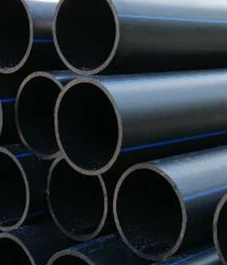Dhj . 18, 2024 10:23 Back to list
HDPE Pipe Connectors for Efficient Plumbing and Irrigation Solutions
Understanding HDPE Pipe Connectors A Comprehensive Guide
High-Density Polyethylene (HDPE) is a widely used thermoplastic that has transformed the landscape of piping systems across various industries. Its applications range from water supply and sewage systems to gas distribution and industrial plumbing. Central to the efficacy and reliability of these systems are HDPE pipe connectors, which play a critical role in ensuring that pipes maintain secure and leak-free connections. In this article, we will explore what HDPE pipe connectors are, their types, applications, installation methods, and benefits.
What Are HDPE Pipe Connectors?
HDPE pipe connectors are specialized fittings designed to join two or more sections of HDPE pipes. These connectors are made from the same durable material as the pipes themselves, ensuring compatibility and longevity. They provide a secure and leak-proof mechanism for transporting fluids, making them essential components in various piping systems.
Types of HDPE Pipe Connectors
1. Electrofusion Connectors These fittings utilize an electric current to melt the inner layer of the connector and the outer layer of the pipe. As the materials fuse together, they create a strong joint. Electrofusion connectors are highly reliable and are commonly used in high-pressure applications.
2. Butt Fusion Connectors In this process, the ends of two HDPE pipes are heated until they become molten and then pushed together. Once cooled, the joint is strong and can withstand the same pressure as the pipe itself. Butt fusion is often used in large-diameter pipelines.
3. Mechanical Connectors These connectors use bolts, clamps, and gasket seals to connect HDPE pipes. They are easy to install and allow for disassembly, making them suitable for temporary setups or applications where future modifications might be needed.
4. Flange Connectors Flange connections involve a flat piece of metal or plastic that is bolted to the ends of the pipes. These connectors are ideal for applications requiring frequent disassembly or maintenance.
Applications
HDPE pipe connectors are versatile and find use in several sectors, including
- Municipal Water Systems They facilitate the distribution of potable water, connecting pipes that transport water to homes and businesses.
- Wastewater Management In sewage systems, HDPE connectors ensure the structural integrity of pipelines that carry waste.
- Gas Distribution These connectors are critical in the safe transport of natural gas, preventing leaks and ensuring the safety of domestic and commercial users.
hdpe pipe connector

- Industrial Applications Industries utilize HDPE connectors in chemical processing, irrigation systems, and mining operations due to their resistance to corrosion and chemicals.
Installation Methods
The installation of HDPE pipe connectors varies based on the type of fitting being used
- Electrofusion The ends of the pipes are cleaned, and an electrofusion fitting is placed over them. The fitting is then energized with an electric current, which melts the polymer and forms a secure bond.
- Butt Fusion Similar to electrofusion, the pipe ends are heated, but in this case, the pipes themselves are joined without a separate fitting. Proper alignment and pressure are crucial during this process to ensure a strong joint.
- Mechanical This method requires minimal preparation. The pipes are aligned, and the mechanical connector is positioned over the joint, secured with bolts and gaskets.
Benefits of HDPE Pipe Connectors
1. Durability HDPE is resistant to corrosion and environmental stress, making these connectors last longer than traditional materials.
2. Flexibility These connectors can accommodate thermal expansion and ground movement, reducing the risk of leaks.
3. Cost-effectiveness Long-term durability and low maintenance needs make HDPE connectors a cost-effective choice over time.
4. Environmental Friendliness HDPE is recyclable, contributing to a more sustainable approach in construction and infrastructure projects.
Conclusion
In conclusion, HDPE pipe connectors are integral components that ensure the reliable operation of piping systems in a multitude of applications. Their various types, methods of installation, and the numerous benefits they offer make them a preferred choice for engineers and contractors alike. As industries continue to seek efficient and sustainable solutions, the importance of HDPE and its connectors will only increase, paving the way for innovative piping solutions in the future.
-
Durable PP Rigid Sheet: Lightweight, Chemical Resistant Solutions
NewsAug.21,2025
-
PVC Grey Sheet for Extraction: Chemical Resistant & Durable
NewsAug.19,2025
-
Durable PVC Pipe Fittings for Plumbing & Irrigation Needs
NewsAug.18,2025
-
HDPE Steel Belt Reinforced Spiral Corrugated Pipe | High Strength
NewsAug.17,2025
-
HDPE Pipe Fittings: Durable, Leak-Proof Solutions
NewsAug.16,2025
-
Premium CPVC Sheet: High-Temp & Chemical Resistant Solutions
NewsAug.15,2025

